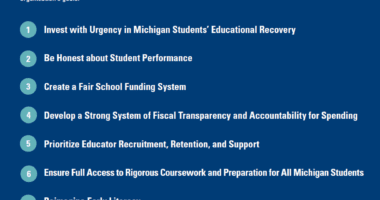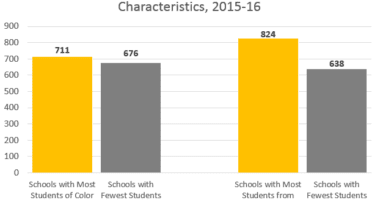How Am I Making History? I’m Teaching the Students Who Will Be Written About in History Books
Last August at a cookout, my dad pulled me aside and said, “Sis, will you just teach English this year? Can you commit to that?” I chuckled, gave him a sly grin, and said, “Sure, Dad. I’ll try.” I was heading into my fifteenth year as a high school English teacher, but my dad knew ‘the job’ was taking a toll on me, especially after being out for extended leave with my fourth baby. “You don’t have to save the world, ya know,” he finished, heading back to check on the hamburgers and hotdogs. “Sure I do,” I muttered to myself.
Working as a high school teacher has drastically changed since I began after graduating from Saginaw Valley State University in 2003. I have witnessed the many changing faces of social media and distraction: slide phone, flip phone, iPod, laptop, iPad, iPhone, MacBook, fidget spinners. You name it, I have collected it or embraced it and figured out a way to use it in class for academic purposes.
I’ve also witnessed an array of style changes: preppy clothes, slippers as footwear, pajama bottoms as pants, the infamous yoga pant, the saggy pant, and now the really expensive pant for more than I make in a day of work.
And I’ve seen something more alarming and that is the main reason why my father brought up his comment in the hot summer sun: student needs were not being met at home, in their social circles, or at school.
We are taught early on in preservice teacher training that if Maslow’s Hierarchy of Needs are not met, then students will never be able to reach a point of investment and responsibility for their education.The more I taught, the more this became reality. My students were suffering from living in food deserts; having to care for their siblings so parents could work 2nd and 3rd shift jobs on top of 1st shift jobs; abuse and neglect; feelings of insecurity at school with the onslaught of frequent school shootings; working 2 or 3 jobs after school and on weekends rather than the one job we were “allowed” to have if we weren’t in a sport that season; not getting dropped off to school on time or picked up before 5 p.m.; and even worse cases such as homelessness, addiction, and using self-harm as a coping mechanism.
So what did I do? I decided to teach empathy. To high school students. We researched, wrote letters, wrote professional emails and tweets, thank you cards and sympathy cards. We read about situations not so dissimilar to our own. We even created a club and called it Empathy for All. It began as a bullying awareness club, morphed into a pro-hero club, and now is a community service and activist club. We were writing for authentic audiences and reading articles and stories in which we could at long last see ourselves as characters. It was a thing of beauty. Until it became terribly exhausting. I’m not sure when I realized I had checked out, or if I ever really did, but that summer, when my dad made that passive-aggressive suggestion, I knew I was in a deep place. I had chosen to teach students instead of preach at them. I had chosen to use real life scenarios in the classroom and discuss relevant topics instead of passing out worksheets. I had chosen to teach the child, not the subject. This was much more draining mentally and emotionally than reading Hamlet and writing a literary analysis. My dad knew this was happening, and most likely my mother, did too, since she is also a teacher, but I did not realize what impact it was having on my life until he asked me that hot summer day to only teach English. At this point, I can’t, and I won’t, because I am teaching the students who are making history. And regardless of where they stand, I know I want to go down as the teacher who was not only on their side, but on the right side when history is written.
Carrie Mattern is a high school English teacher in Flint. She was honored as SVL Teacher of the Year in 2013. She serves as sponsor of Empathy for All and leads the Cavalier Book Club. She is the mother of four. When she is not driving her kids to practices or games, she enjoys exploring off road beaches with her husband.
The views and opinions expressed here are the views of the author and do not necessarily reflect those of The Education Trust-Midwest.






